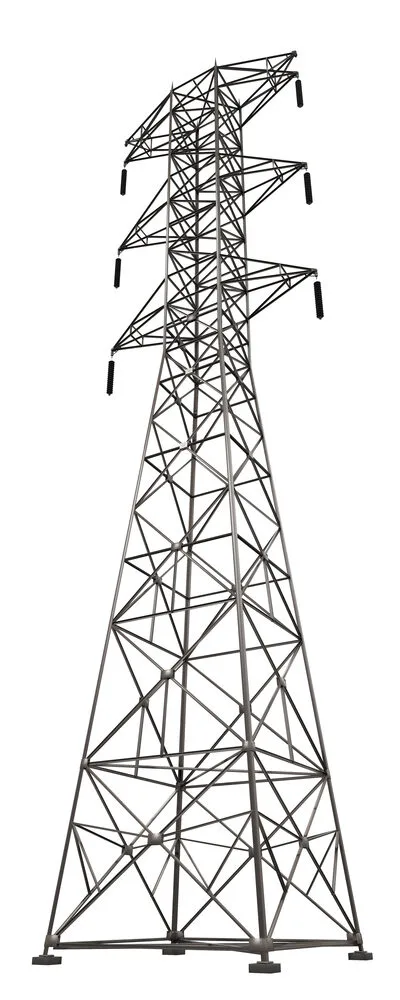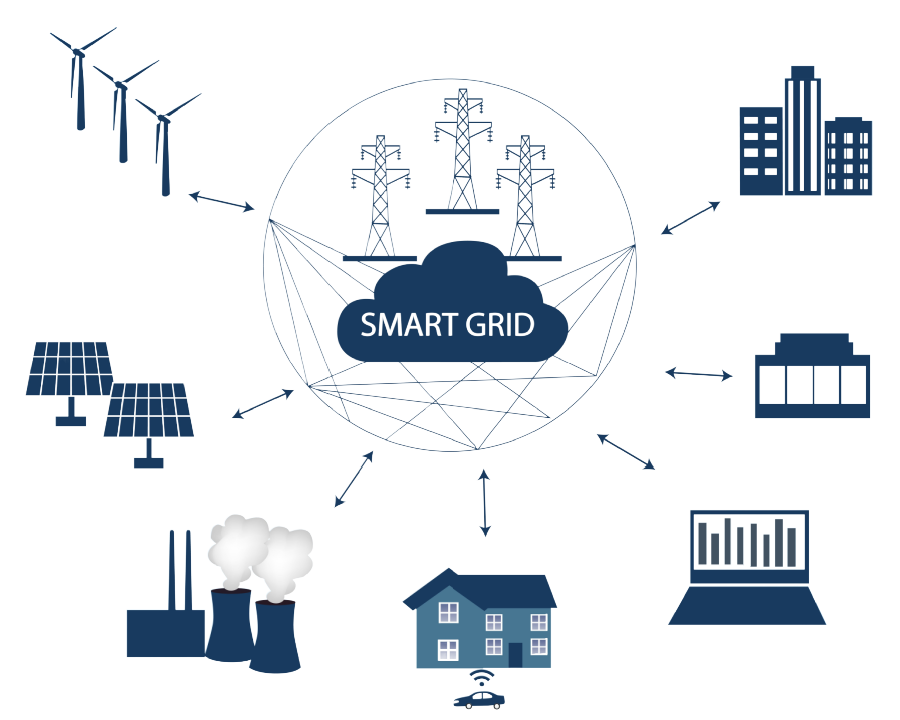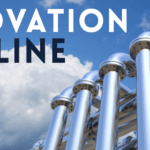Innovative Solutions for Big Energy
The electric grid needs modernizing to support our expanding e-economy and national security. Innovative solutions for the energy sector are increasingly powered by collaborations across researchers, government officials and companies looking to harness emerging renewable technologies, update control systems and computing, and find new materials and methods to design regional energyshed management systems for a modern, efficient and de-carbonized grid. Adjacent technologies impacting the energy industry can be harnessed by collaborative project teams of engineers and leading organizations who seek to modernize power systems and continue to utilize renewable resources. Let’s plug in to some current topics in this sector.
Power Hungry Industries
The global economy will continue to demand more power and with that growth, greater energy security. Conventional power plants requiring energy sources from coal, natural gas, and nuclear should increasingly look to integrate renewable technologies like solar, wind, hydroelectric, geothermal, and biomass clean energy sources.
Currently, more than half of the world’s total delivered energy is consumed by the following energy-intensive industries: chemicals, food, iron and steel, nonferrous metals (primarily aluminum), nonmetallic minerals (largely cement), pulp and paper. The demand for these products will continue to increase with projected population growth, so the challenge for energy companies is to satisfy manufacturers’ power needs, abiding by changing government regulations, while continuing to provide reliable and cost-effective power to individual customers on an expanding grid.
According to the Annual Energy Outlook 2022, in the United States energy usage in the industrial sector is primarily for the powering, heating, and cooling of machinery. A smaller amount of energy is also utilized for these facilities’ heating, air conditioning, and lighting needs. Other “power-hungry” US industries include Mining which accounts for an additional 9%, Construction at 6%, and Agriculture at just 3%. While these substantial industry energy users are transitioning to cleaner energy sources to reduce carbon emissions, there is the continuing problem of how closely linked power generation is to climate change issues. Extreme weather conditions further exacerbate power needs, whether it is extra cooling during record high temperatures, endless heating during severe periods of freezing temperatures, or maintaining older grid system operations during storms, floods, and wildfires. It’s no secret that grid infrastructure needs modernizing, and this is a convincing opportunity for innovation.

The Innovation Challenge: A Smart Grid Energy System
New technologies to better connect utility power producers with end users like factories, businesses, and private home consumers must continue to develop. Dynamic optimization of grid operations and heightened security are of highest importance. Efficiently digitizing a two-way exchange of data along the power grid will reduce power outages and frequent load balancing brown outs, thereby increasing reliability while monitoring demand due to weather fluctuations or off-peak time. Remote global areas that do not have consistent power or households which generate power through solar panels are other factors in consideration on smart grid infrastructure design.

Breaking the Barriers with Collaboration
However, there continues to be regulatory, industrial, and technical barriers to achieving progress between the variety of stakeholders in this sector. For example, homeowners are incentivized to create their own power through installing solar panels. These consumers are also promised retail credits for excess energy they supply back to the grid by local energy providers, but net metering systems are not yet widely implemented. An industrial barrier to a transition plan for smart grid infrastructure is competition and lack of investment across utility providers.
A shocking statistic from the National Regulatory Research Institute: R&D spending in Utilities is usually less than 1% of its revenue.
Other high-tech industries are up to 10 times that amount, yet our world’s e- economy is completely dependent on reliable power. Utility companies need governmental and regional support to seek out new processes and improve their current technologies. There are also existing technical barriers in this sector considering universal data standards to promote system interoperability, set security protocols, and a shortage of skilled workers joining the power engineering field. For these reasons, it is not surprising that a modern grid has not yet developed, but with thought leadership and collaboration this innovation challenge can certainly be solved.
Protecting Energy Infrastructure
Creating the modern grid is the first innovation challenge…maintaining operations through all types of inclement weather and consumer demand while also preventing potential terrorist attacks on critical grid infrastructure are additional challenges to strategize.
The North American Electric Reliability Corporation (NERC) is a regulatory authority formed to increase reliability and efficiency of the power system and reduce risks to the security of the grid. It predicts “high peak-demand projections, inadequate generator weatherization, fuel supply risks, and limited natural gas infrastructure” will contribute to insufficient energy supply during upcoming severe winter weather events. It also warns of potential supply chain shortages of crucial hardware, software, and networking equipment to keep the grid operating. Balancing the electricity supply, demand, and net interchange on the systems in real time with the Hourly Electric Grid Monitor is a key development by this organization to provide a centralized data source for the country’s grid. New technology in drones and cybersecurity should also be sourced for surveillance and repair. As a nation of consumers fundamentally reliant on power, it is our responsibility to support the consortiums and government projects that make this a priority.
Innovation Solutions
A smart, modern grid can be built, but only with collaborations across various experts in electrical engineering, IT, AI, utility companies, and governments. Ezassi offers its clients in the energy sector a robust Innovation Management Platform to support these necessary collaborations to help solve the challenges of older power systems. Our software accelerates innovative project pipelines to develop and scale a modernized smart power grid solution.
In addition, technology scouting services provide important research to support innovative R&D initiatives. Here’s a whitepaper on geothermal energy implementation challenges or visit our Services page to see more examples of Technology Discovery Reports.
Ezassi has research services and technology scouting tools to connect your business with the disruptive innovations that are changing industries. We also offer a collaborative platform for open innovation. Let’s talk about how our software can help power your organization’s future.






